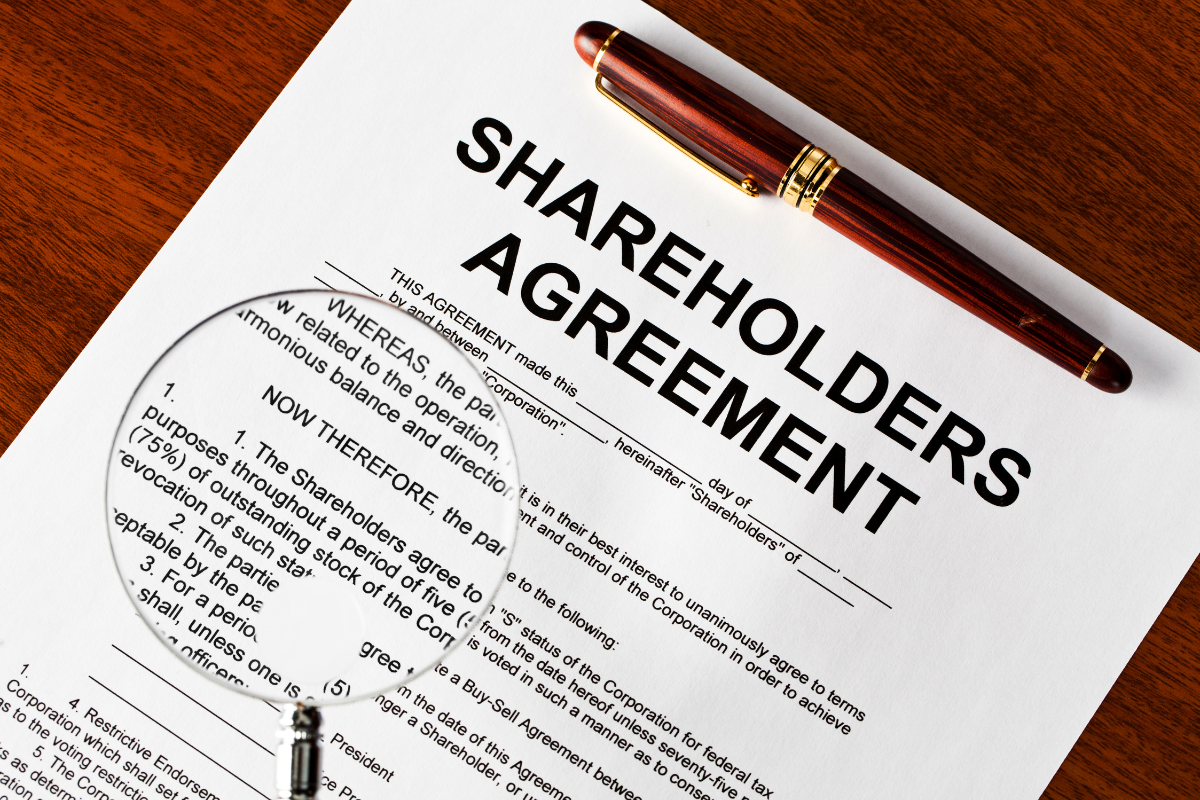
What is a Shareholders Agreement?
A shareholders agreement (SHA) is a binding contract which sets out the rights and obligations of shareholders in a company.
A well drafted SHA will provide clarity and control over the affairs of the business and ensures everyone knows the requirements of their role.
SHAs are vital for companies at all levels and sizes, and well drafted agreements should include guidelines for:
- the governance of the board of directors and management structure of the business;
- how responsibilities will be divided between directors and shareholders;
- the process to acquire and sell shares;
- the funding of the company; and
- how shareholders can exit the company (including penalties for bad leavers).
Being pro-active in thinking through the terms of your SHA allows you to address issues as they arise rather than dealing with difficult and costly disputes after the fact. Without structure beyond the replaceable rules and/or the constitution of the company, business owners and shareholders leave themselves vulnerable.
Why is having a SHA important?
Below are ten key elements every SHA should incorporate to ensure their effectiveness for the company.
1. Clarifying Ownership and Equity Distribution:
A SHA should define the percentage of ownership each shareholder has in the company. It should specify how shares can be transferred or sold to prevent disputes over ownership changes.
2. Protecting Minority Shareholders:
SHAs outline rights and protections for minority shareholders to ensure they have a say in key decisions.
Australian corporate law does not give minority shareholders rights to require board representation or a particular level of control of a company. Hence, your SHA may include provisions to prevent the majority shareholders from taking actions that unfairly prejudice minority interests. For example, a SHA may stipulate that certain actions cannot be taken by the company or by the directors without the approval of a specified number of minority shareholders.
3. Governance and Decision-Making:
A SHA should establish rules for decision-making processes and outline how major decisions are to be made. This could include the process for appointing directors, approving budgets, or making significant business decisions. The flexible structure of SHAs means you can define the roles and responsibilities of directors and management specific to your company and this can be amended as the business grows and evolves.
4. Confidentiality and Non-Compete Clauses:
Your SHA should include clauses to protect sensitive company information and trade secrets. Whilst directors are subject to their own duties, being proactive in preventing shareholders from engaging in competitive activities will minimise harm to the company.
5. Dispute Resolution:
A robust SHA should outline how potential disputes between shareholders will be resolved to avoid costly and time-consuming legal battles. This is vital so that you can address issues as they arise rather than being caught on the back foot. Potential mechanisms may include mediation or arbitration.
6. Exit Strategies:
A shareholder may want to exit the company due to retirement, sale of shares or various other reasons. A “bad leaver” provision is not something covered by legislation and is very useful if needed. This provision can define mechanisms for the valuation of shares during a buyout or sale and will protect the company from unforeseen or bad faith departures.
7. Financial Matters:
Your SHA may include established rules for the distribution of profits such as restrictions on the company’s ability to take on debt or distribute dividends.
8. Succession Planning:
Succession planning is a pro-active measure for how the company will handle changes in leadership. Your SHA may specify procedures for appointing new directors or transferring ownership in the event of the death or incapacity of an officer or shareholder.
9. Compliance with Australian Law:
A SHA should ensure that the company operates in accordance with Australian corporate law. You can tailor the agreement to comply with specific requirements and regulations applicable to Australian companies.
10. Customisation to Company Needs:
Finally, a SHA allows for flexibility to customise rules and regulations based on the specific needs and circumstances of the company. SHAs are not specifically regulated by government legislation but are manifestations of contract. Given this, there is no limit on what content a SHA may regulate, provided that the terms are not void under the ordinary principles of contract law. Hence SHAs are customisable to company needs and prove an effective mechanism for ensuring direct and legally binding shareholder principles and obligations.
Do you really need a SHA?
Yes! Organising a SHA is a small upfront cost that will save you a huge amount of unnecessary stress in the future. SHAs have proven an effective mechanism for maintaining a stable and clear relationship between shareholders and directors.
It is important to be pro-active in thinking through the terms of your SHA. Even if your company is not planning to raise capital immediately, it is important to implement a SHA as soon as it appears that there may be more than one shareholder.
The experienced team at M+E know how important it is to implement an effective SHA. If you would like to put a SHA in place, or require a review of your current SHA, please do not hesitate to contact Lisa Johnston (lisa@morganenglish.com.au) and the Business & Financial team at M+E who will talk you through the options and find the right approach for you and your business.


